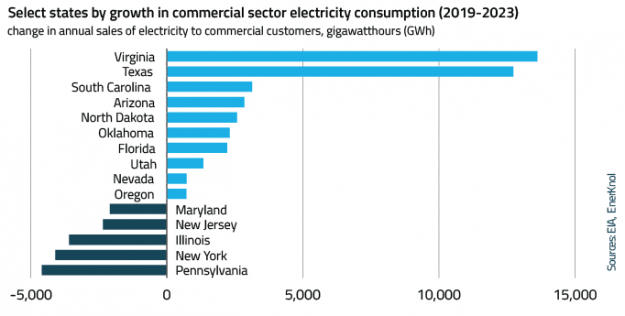Visual Primer: Energy-Intensive Data Centers Look to Nuclear for Steady Supply of Emissions-Free Power
Co-locating energy-intensive data centers with power generation facilities is viewed as a strategic solution to access large sources of electricity without lengthy interconnection processes or extensive grid
upgrades. Recently, technology firms have turned to nuclear power for its steady, carbon-free output to directly power these high-demand facilities. However, the co-location trend has raised concerns over grid reliability and potential cost impacts.







